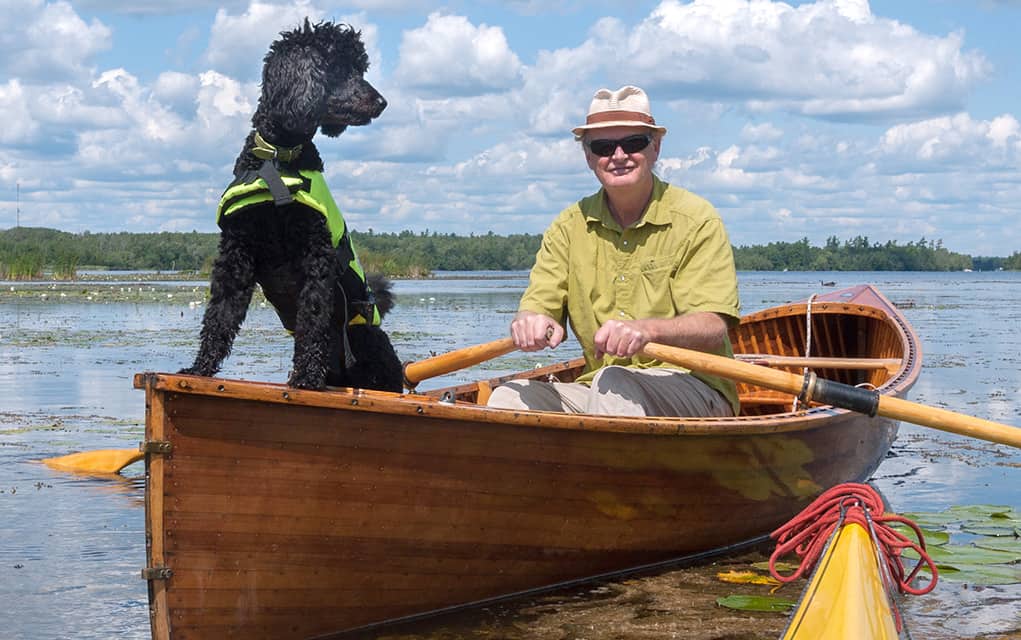The farmers’ market and Mennonite history of St. Jacobs may be familiar to residents here, but for an ever-increasing audience of new Torontonians, the attractions just outside the city may be complete unknowns. That’s where John Barber’s new book, Day Trips Around Toronto, comes into play.
“People who live in your part in the world probably know it already,” said Barber. “But I just think there’s a fabulous opportunity for recreation and that sort of tourism on and in and around the Toronto greenbelt that’s gradually developing that’s very little known to people in Toronto, especially all the new people in the Toronto. There are over 125,000 people a year that come to that city, and they don’t know what to do with themselves.”
The freelance journalist mused on the population’s intense determination for new experiences and exploration. He brought up an incident that occurred on July 31 in Millgrove, where a family’s sunflower field was forced to close to the public forever due to thousands of visitors unexpectedly showing up.
“So many people came to look at the sunflowers that they trampled it and blocked the roads,” said Barber. “To me, that was an absolutely perfect example of what the people are looking for. It’s like ‘give us a diversion.’ And nobody knows where to go, and nobody knows what to do, so they trample sunflower seeds. I really feel the want and the need for this sort of thing.”
The book provides a snapshot of many locations that locals will recognize, such as the St. Jacobs Farmers’ Market.
“What really strikes me is the degree of re-naturalization that has occurred in this part of the country since I was younger,” said Barber. “I don’t think people realize how much more forest and green there is, than there was even 40, 50 years ago. Certainly more than there was in the early 20th century when it was all pretty well disastrous and no one would ever really spend any time in southern Ontario, certainly not on recreational grounds. Now, I think it’s really become that because of a lot of re-naturalization, also more money revival of some of these small places. St. Jacobs is a perfect example.”
Another location mentioned in the book that local readers can easily find is the West Montrose Covered Bridge, the last wooden covered bridge in Ontario and the oldest such bridge in Canada. Construction of the bridge began in 1880. The bridge gets approximately 50,000 visitors a year, said village resident Tony Dowling, a member of the BridgeKeepers group.
“It’s not just a geographical place, it’s an experience,” said Dowling. “It’s a really special place, like a living museum.”
According to Region of Waterloo spokesman Bryan Stortz, the filming of the 2017 film ‘It’ at the bridge only further contributed to its appeal as a tourist destination.
“I used to get the calls for filming, and with ‘It,’ because it’s a big Hollywood company, I just said ‘fine, talk to the legal department. They’ll do a legal agreement,’” explained Stortz. “It was really slick, they just went in and filmed it, and nobody even knew they were there. That’s why they’re big movie companies, I guess. I understand it did give the bridge a bit of profile.”
More local locations that the book explores include the Mennonite Story Interpretative Centre, the St. Jacobs horse-drawn tours, and the heritage rail. Barber’s book also touches on attractions in Niagara Falls, Collingwood and Blue Mountain, Peterborough, Guelph and Elora.
“I wanted to showcase recreational opportunity, the greenbelt in general … the borders of the greenbelt, that area, I think it’s been overlooked,” said Barber. “People automatically go north to cottage country. There’s a lot more to be said and seen and done a lot closer to the city. And I wanted to bring that out.”
The book advertises itself as a quick-reference tool to make the most out of one’s day off, noting the locations highlighted are affordable, close by, and do not require much planning to reach. All that is needed is the willingness to drive out to see the beautiful landmarks in Ontario.









